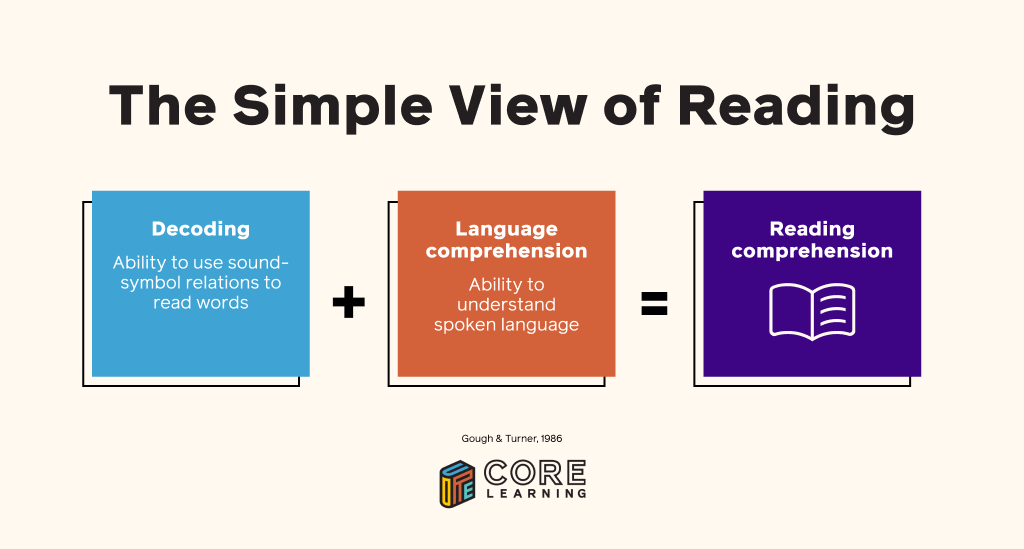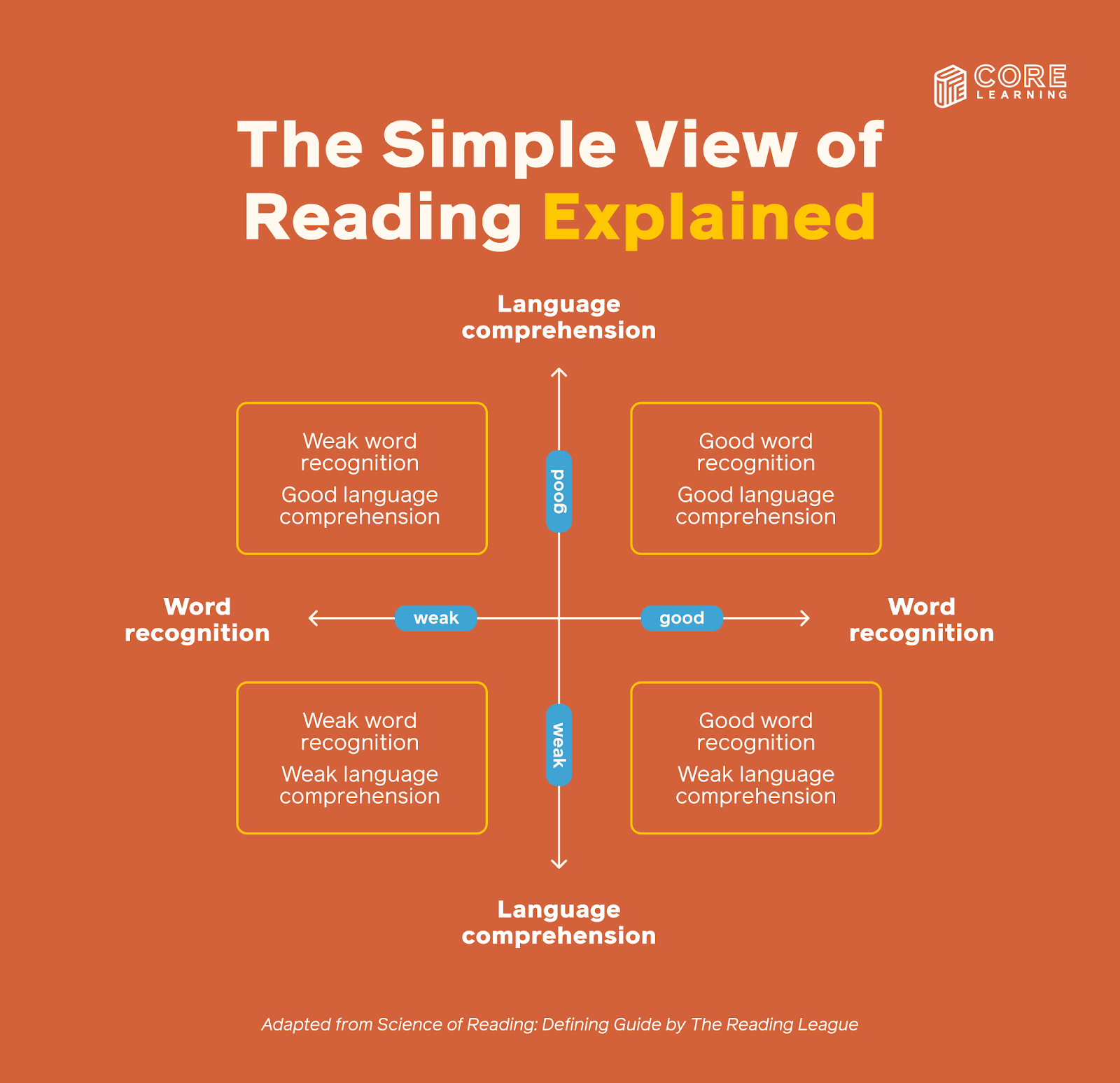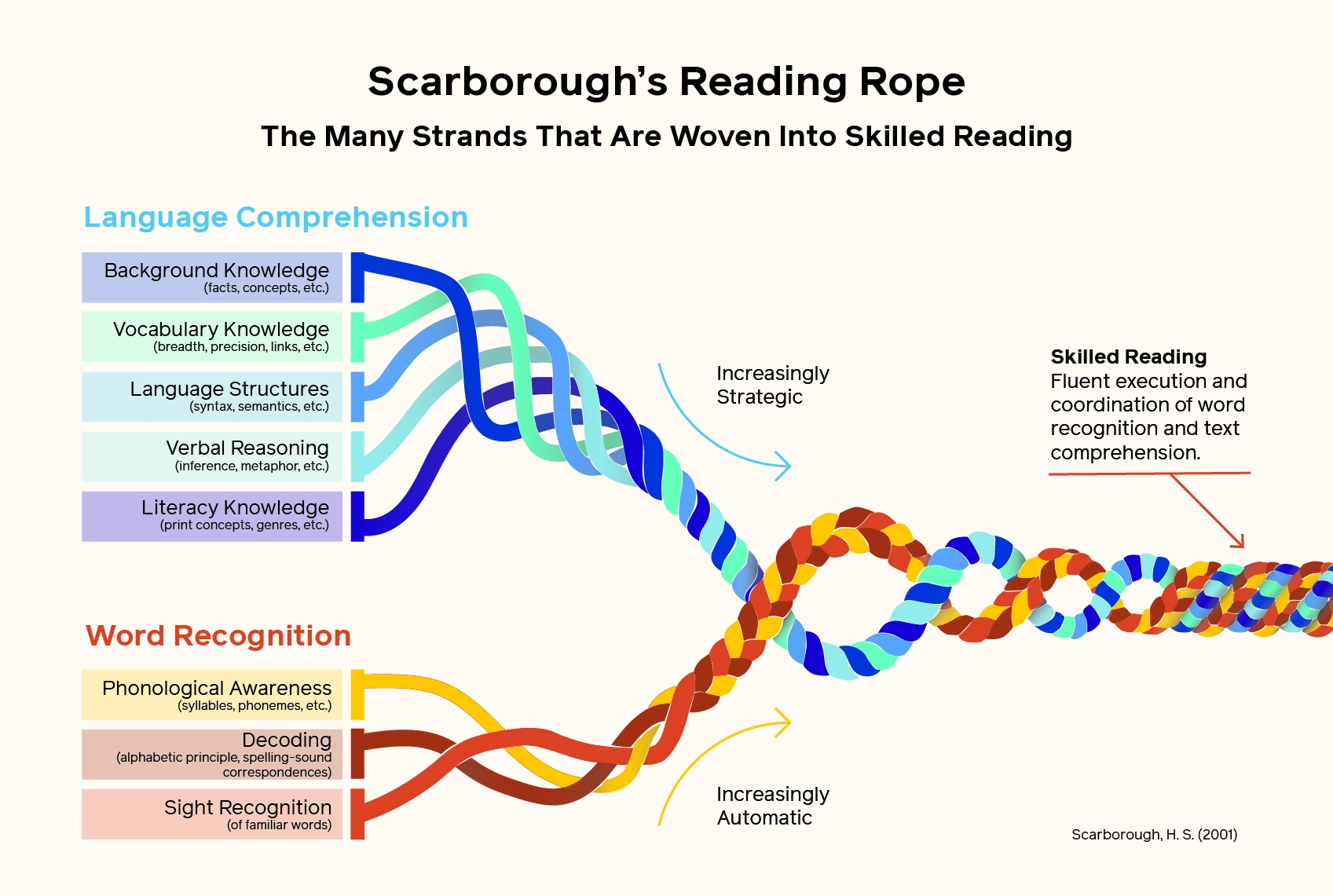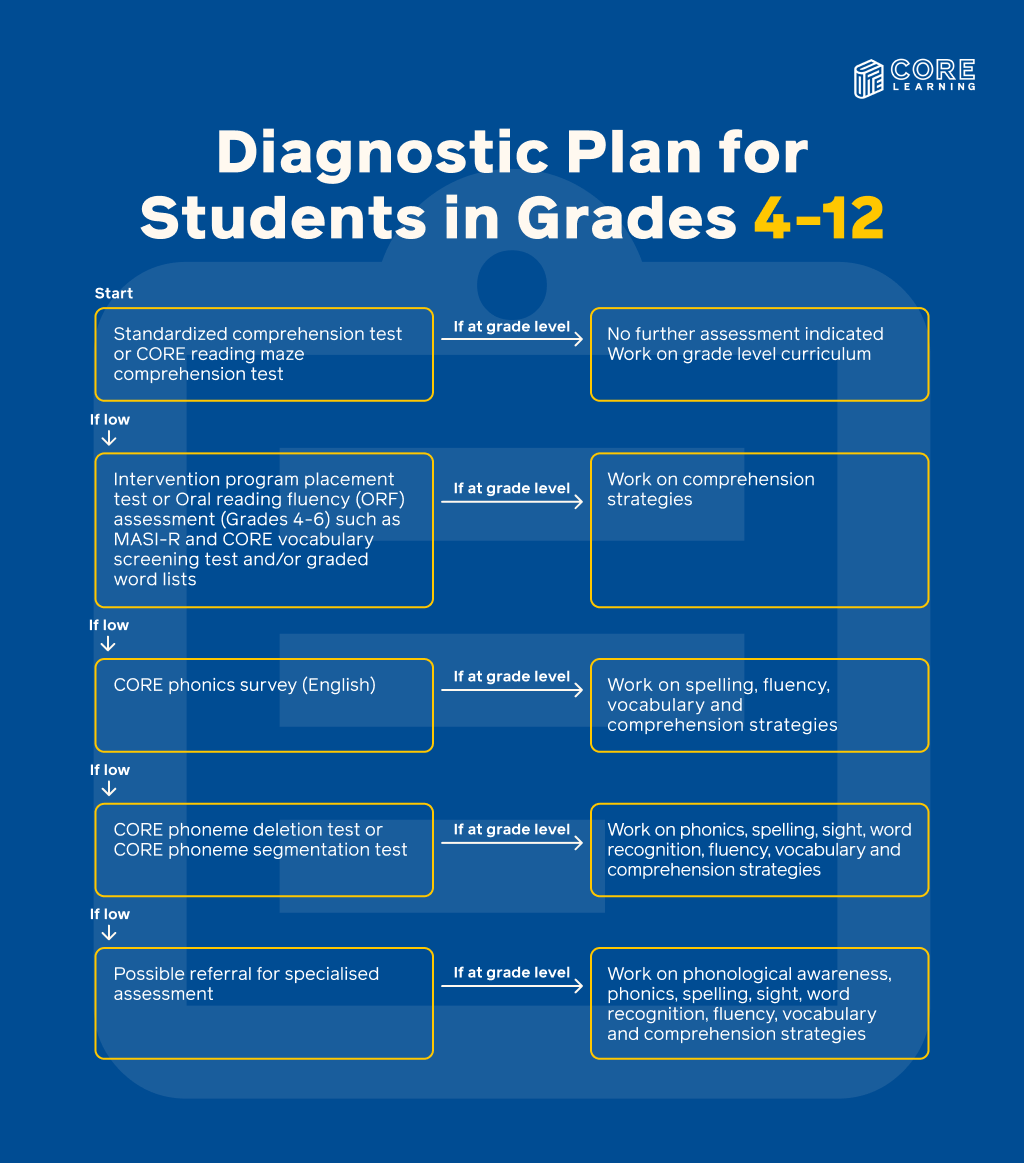
Blog Post
A Teacher’s Guide to Assessing Reading Effectively in Grades 4–12

In the dynamic world of education, teachers wear many hats as they strive to create vibrant learning environments and foster meaningful connections with their students. Yet, teachers with students in grades 4–12 often encounter a persistent issue: older students who haven’t fully mastered all reading skills.
Despite their extensive training, the complexity of addressing this issue can leave even the most seasoned educators in a fix. The available data may highlight the collective gap of unfinished instruction, but it often fails to provide a clear path forward.
To close these gaps and re-engage students who are close to disengagement, teachers must conduct precise diagnostic assessments. These assessments have a different purpose from broad measures such as state tests and district screeners, and are geared instead toward precision measurement that can give educators the specific information they need to improve each student’s outcomes.
However, before delving into diagnostic assessments, it’s important to pause and ask a fundamental question: “Why?”
The “Why”
Because we know how children learn to read, we need to question “why” some students are not reading at levels consistent with expectations. To answer this question, it’s essential to know the “What” and the “How.”
- What do we need to know? If we find out what information a student already knows and what they still need to learn, we can zero in on the specific skills they need.
- How will we go about it? We will need to determine how to use the information gathered to inform instruction.
Let’s break down these two concepts further.
The “What”
The purpose of reading is to understand what we read, either for information or enjoyment. In other words, comprehension is the goal of reading instruction. As a result, teachers need to understand “what” students need to do to become strong readers.
Gough and Tunmer developed the Simple View of Reading in 1986 to provide a framework for understanding what it takes to become a strong reader. The theory depicts the skill sets required for reading comprehension as a mathematical equation.
According to the Simple View of Reading, comprehension requires two skill sets:
- The ability to decode (or recognize) the words in the text
- The ability to understand the language that you’re decoding
The product of these two elements constitutes reading comprehension.


A crucial question that teachers in grades 4–12 need to ask for students who may have wide gaps of unfinished instruction is this: Is the student’s difficulty with reading comprehension a result of difficulty with language comprehension, difficulty recognizing the words, or both?
To answer this question, teachers can use a four-quadrant model (shown below) made from the intersecting lines of the Simple View’s language comprehension and word decoding.
Students with strong reading comprehension will fall within the quadrant indicated by proficiency in both language comprehension and word decoding. If a student has strong language comprehension but has difficulty with word decoding, or if they have strong decoding skills but weak language comprehension, they will have difficulty with reading comprehension. That said, students with low skill attainment in both word decoding and language comprehension will have more significant difficulties with reading comprehension.


Scarborough’s Rope also provides an excellent visual of the subsets of skills that fall under the two intersectional skills of language comprehension and word decoding (recognition).


Assessing these skill subsets, a teacher can see exactly what skills their students need to build strong reading comprehension (i.e., which strands of the rope their students are still trying to weave into the process).
The “How”—Assessments to Inform Instruction
There are three types of assessments that teachers usually administer as a means to determine skill areas to focus on: screening, diagnostic, and progress monitoring.
Screening Assessments: Do We Already Have Some Information?
Teachers are frequently given screening data, such as from oral reading fluency assessments. ‘Universal screening’ assessments are common in school districts. A teacher can map each student’s data from the universal screeners onto Scarborough’s Rope to see if they can identify any subsets of skills under word identification and language comprehension that the student may need continued support with.
Next, the teacher has to ask:
- What more information do I need?
- For which students do I still have unanswered questions?
By asking these questions, the teacher can ensure that they are providing the best possible instruction for all of their students.
Diagnostic Assessments: What Questions Do We Still Have?
For students scoring below benchmark, questions that are not answered by the screening data can be answered by administering additional diagnostic assessments. A diagnostic assessment plan can ensure there are no questions left unanswered for students who have unfinished instruction in reading.
CORE’s Assessing Reading: Multiple Measures provides a collection of measures for comprehensively assessing reading-related skills. On Page 15, there is a Diagnostic Plan for Students in Grades 4-12. In this plan, there are five steps to determine the type of help a student needs to achieve strong reading comprehension:
Step 1
This step starts with a standardized comprehension test such as a state assessment or the CORE Reading Maze Comprehension test,as recommended in the Diagnostic Plan. If students are at grade level as measured by the comprehension test, no further assessment is typically needed. Since the diagnostic plan provides a choice, it’s important to understand the differences between a reading maze test and a more traditional measure of comprehension that contains passage reading and multiple choice questions.
The purpose of a maze test is to measure lower-level comprehension processes. The items on the test are designed to determine how well students interpret single sentences and are designed to be easy to answer if the student has a basic idea of the gist of the passage. In contrast, state standardized assessments of comprehension are designed to measure comprehension of more complex passages that require high levels of background knowledge and language comprehension.
Asking what the test is actually assessing is as important as asking what you want to know. If the student scores low on a measure of comprehension, then going to the next step is important.
Step 2
This step can include a placement assessment for a high quality intervention program appropriate for secondary students. The placement test should only be given to those students who did not meet grade-level benchmarks on the assessment administered in Step 1. These types of program assessments may offer valuable information into the specific skills mastered by a student and those that still require improvement. This assessment will also provide information if a student qualifies for instruction in the intervention program and where they should be placed to begin instruction.
Although the diagnostic plan chart offers an option, educators should also consider administering an Oral Reading Fluency (ORF) assessment and a vocabulary screening as part of this step.
- The ORF assessment measures a student’s ability to read aloud accurately and fluently. ORF scores can be used to identify students whose reading fluency may be below grade level.
- Vocabulary screening assesses a student’s knowledge of vocabulary words, which is an important predictor of reading comprehension.
The reason educators should consider these two additional assessments is that the information will help develop a more comprehensive instructional support plan.
If a student scores below grade level on the ORF assessment, teachers should administer the Phonics Survey in Step 3 to determine a student’s decoding proficiency before the vocabulary screening is given. The information on oral reading skills will guide the decision on whether to administer a vocabulary test silently or by reading it aloud to the student.
Step 3
Step 3 is to administer a phonics survey, which measures a student’s ability to decode words. The survey is only given to older students if they are unable to read fluently at their grade level or if a program placement test indicates they lack decoding skills but doesn’t specify the skills.
When administering this survey with older students, start with multisyllabic words and progress to single-syllable word types at decreasing levels of difficulty until the student is successful at decoding the words. Pseudowords are also presented for each word type to ensure that the student can decode the word rather than having just memorized the words.
Step 4
Step 4 is to assess phonemic awareness for older students who exhibit significant decoding skill deficits. Various measures can be used to assess proficiency in phonemic awareness. The teacher can select the most suitable assessment based on the student’s needs and abilities. (See grade level and purposes for the Phoneme Deletion Test and Phoneme Segmentation Test, pages 24 and 30, Assessing Reading: Multiple Measures). These measures will serve as an indicator of the student’s phonemic awareness skills. If an older student does not demonstrate phonemic awareness, it is important that the instruction provided addresses this.
Step 5
Step 5 is to refer a student for specialized, more comprehensive assessment. This step is recommended if difficulties with phoneme manipulation are apparent. Poor decoding skills and lack of phonemic awareness at this stage in a student’s schooling could indicate learning difficulties that only a specialist can diagnose.


By completing these steps, teachers can gain a comprehensive understanding of a student’s reading skills and use the information to guide instruction.
It’s important to note that when addressing the needs of older students with reading challenges, teachers begin with the most complex skill and progressively assess their way down to the foundational levels (i.e., they assess from the top and work their way down).
Phonemic Awareness, for example, is something that most students in Grades 4–12 understand, but some students (for example, those with dyslexia) still have difficulty with parsing the sounds of the language. In such cases, the teacher may decide to have the student evaluated by a specialized professional. This step helps identify students who would benefit from specialized assessments and provides valuable insights into their specific needs.
Progress Monitoring: Is it Working?
Progress monitoring assessments inform teachers about the effectiveness of their instructional approaches. Within the regular classroom setting, these assessments include both unit assessments and teacher-created assessments, evaluating student mastery of the content taught and effectiveness of the methods used.
For students receiving instructional intervention, progress monitoring is essential. It can be used to monitor students’ response to instruction, determine rates of improvement, identify students who need more intensive support, and compare the efficacy of different interventions. Progress monitoring data helps teachers to know when to intensify instruction for those students who need it and when to move more quickly for those who are ready.
Progress monitoring assessments should be frequent, brief, standardized, and easy to administer. Teachers should select measures with demonstrated validity, reliability, and predictive value. It’s also essential to assess students at regular intervals at least monthly, but preferably weekly or biweekly. As a general rule, the more intensive the intervention, the more frequent the progress monitoring.
Curriculum-Based Measurement (CBM) is often used for progress monitoring. Curriculum-Based Measures, such as Oral Reading Fluency, include alternate forms that are comparable in difficulty to allow teachers to monitor student growth over time. It’s important to select progress monitoring measures that will be sensitive to the growth students make as a result of the reading intervention. For example, CBMs such as Nonsense Word Fluency or Word Reading Fluency may be more sensitive to an older student’s growth if the student is placed in an intervention that focuses on reteaching letter/sound associations and initial word reading.
Other measures for older students, such as tests of Silent Word Reading Fluency, may also be sensitive to growth made as a result of the intervention. They are easy to administer and can measure targeted phonics or fluency skills.
A combination of monitoring out-of-grade level along with monitoring at grade level provides the teacher with information needed to determine if the student is making progress as the result of the intervention, as well as if the student is making enough progress to close gaps to meet grade-level benchmarks.
Closing the Unfinished Instruction Gap With CORE Learning
The responsibility for unfinished instruction lies with those providing it, not the students themselves. To close the collective gap, precise reading assessments are crucial, and these should uncover students’ needs.
CORE Learning’s Assessing Reading: Multiple Measures, Revised 2nd Edition offers a comprehensive collection of measures to assess various reading skills. These assessments not only identify the root causes of reading difficulties, but also guide the next steps in instruction and progress monitoring.






